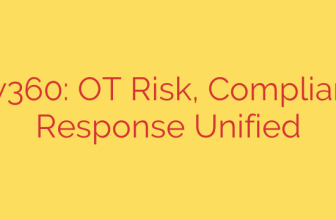
Demystifying Makefiles: Your Ultimate Guide to Build Automation with GNU Make
If you’ve ever worked on a software project of any significant size, you’ve likely encountered the tedious cycle of compiling code. You change one file, then you have to remember which other files depend on it and run a series of complex compiler commands. Forget one step, and you’re left with confusing errors or an outdated executable. This is where build automation tools come in, and one of the most powerful and enduring is GNU Make.
At its core, make is a utility that automates the build process. It reads a special file, called a Makefile, to understand how your project’s files depend on one another and what commands are needed to compile them. This simple concept delivers enormous benefits, saving you time and preventing costly mistakes.
Why Bother with a Makefile?
The primary advantage of using make is its intelligence. It automatically determines which parts of a project need to be recompiled after a file is changed.
Imagine a project with ten source files. If you only modify one, you shouldn’t have to recompile all ten. make analyzes the timestamps of your source and compiled files and only rebuilds the necessary components. This leads to:
- Efficiency: Drastically reduces compilation time, especially in large projects.
- Reliability: Ensures your final executable is always up-to-date and consistent.
- Simplicity: Consolidates all build logic into a single, manageable file. Running
makeis far easier than remembering longgccorg++commands.
The Anatomy of a Makefile: Rules and Recipes
A Makefile is essentially a set of rules. Each rule defines how to create a file (the target) from other files (the prerequisites). The structure of a rule is straightforward:
target: prerequisite1 prerequisite2 ...
recipe
Let’s break down these three essential components:
- Target: This is the name of the file you want to create, such as an executable program or an object file.
- Prerequisites (or Dependencies): These are the files that the target depends on. The rule will only execute if the target file doesn’t exist or if any of the prerequisites have been modified more recently than the target.
- Recipe: This is the command that
makeexecutes to create the target. Crucially, the recipe line must begin with a Tab character, not spaces. This is a common pitfall for beginners.
A Practical Makefile Example
Let’s see this in action with a simple C project consisting of three files: main.c, utils.c, and utils.h. We want to compile them into a single executable named app.
Here’s what a basic Makefile for this project would look like:
# Define the compiler and flags
CC = gcc
CFLAGS = -Wall -g
# The final executable depends on the object files
app: main.o utils.o
$(CC) $(CFLAGS) -o app main.o utils.o
# How to build main.o
main.o: main.c utils.h
$(CC) $(CFLAGS) -c main.c
# How to build utils.o
utils.o: utils.c utils.h
$(CC) $(CFLAGS) -c utils.c
# A rule to clean up the project
clean:
rm -f app *.o
When you run the make command in your terminal, it looks for the first target (app) and sees that it depends on main.o and utils.o. It then finds the rules for building those object files, executes their recipes, and finally, builds the app executable.
Level Up with Variables and Phony Targets
Our example introduces two more powerful concepts: variables and phony targets.
Variables make your Makefile clean and easy to maintain. In our example, CC = gcc and CFLAGS = -Wall -g define the compiler and the flags we want to use. If we ever want to switch to a different compiler (like clang) or change the optimization flags, we only need to modify one line at the top of the file. This is far better than changing it in every single recipe.
A phony target is a target that doesn’t represent an actual file. It’s simply a name for a recipe you want to run. The most common phony target is clean. Our clean rule deletes the compiled executable and all object files, allowing you to start a fresh build.
To declare a target as phony, you should add this special line to your Makefile:
.PHONY: clean
This tells make that clean is just a command label and it shouldn’t check for a file named “clean” before running the recipe.
Final Thoughts: An Essential Developer Tool
While modern IDEs often hide the build process, understanding Makefiles is an invaluable skill for any serious developer. It gives you precise control over how your software is built, improves your workflow, and provides a deeper understanding of the compilation and linking process.
By mastering targets, prerequisites, and recipes, and leveraging variables and phony targets, you can transform a chaotic manual process into a streamlined, automated, and error-free system. Start with a simple project, write your first Makefile, and experience the efficiency of automated builds for yourself.
Source: https://www.tecmint.com/introduction-to-makefiles-gnu-make/








